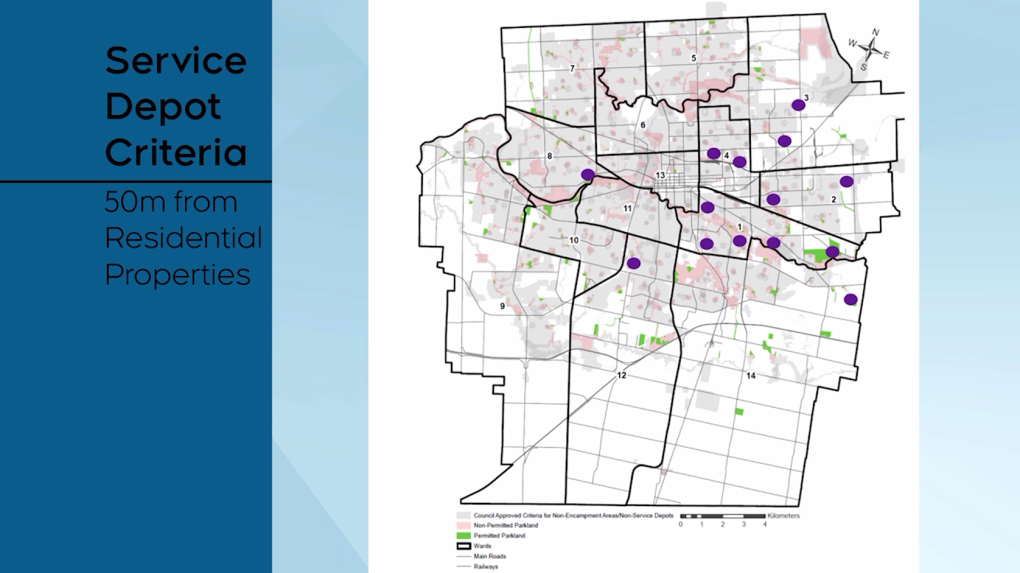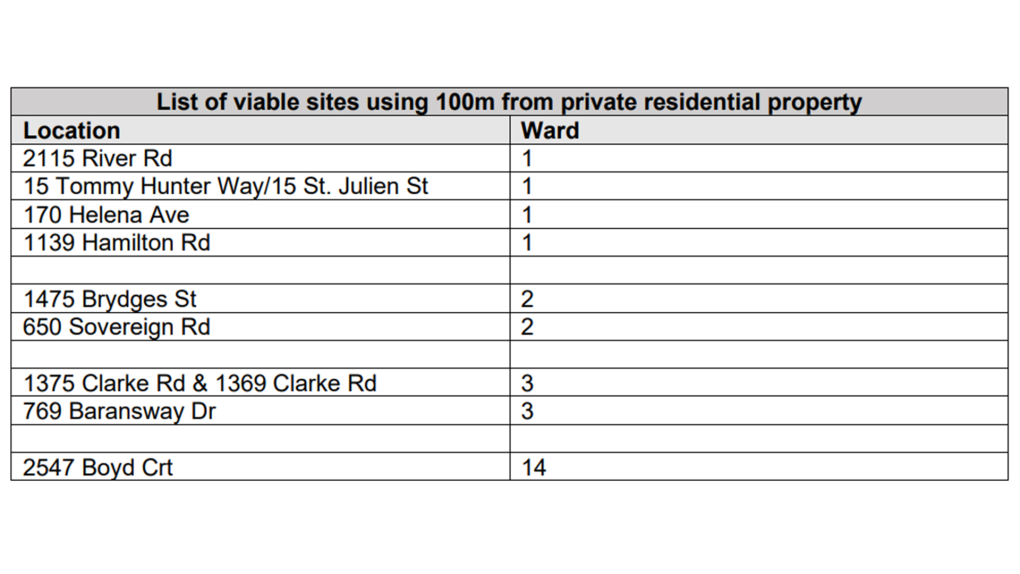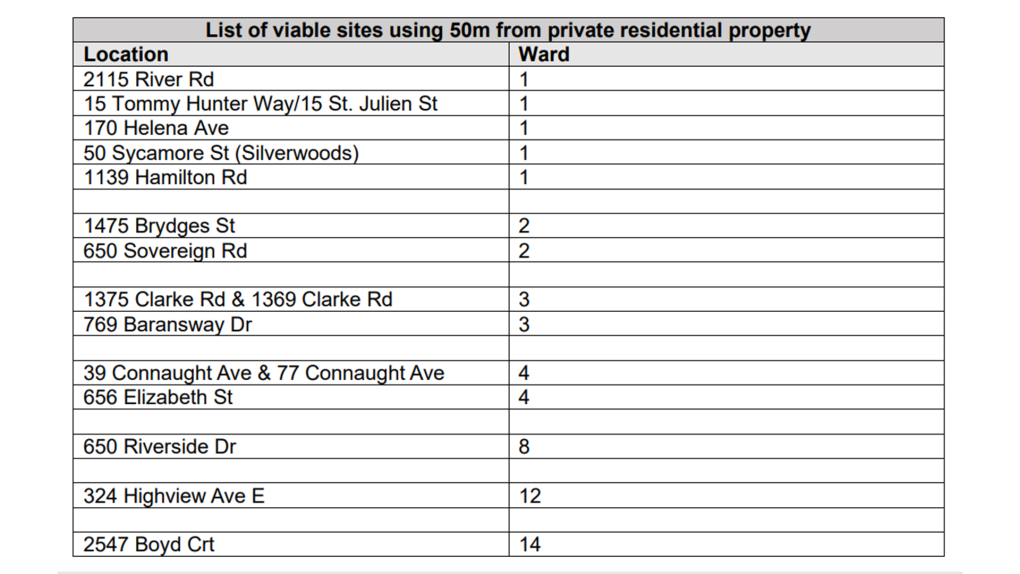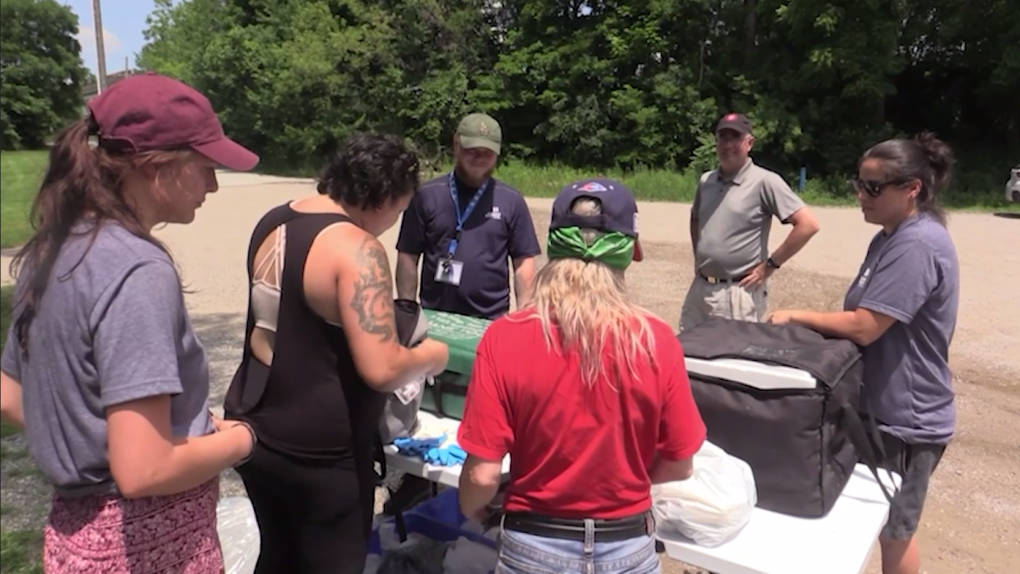Deciding on new areas for Service Depots that supply fundamental must homeless encampments might pit neighbourhood in opposition to neighbourhood.
“We’re willing to do our part, but not when other parts of the city do nothing,” defined Coun. Hadleigh McAlister, who represents Ward 1 within the east-end. “That is really the issue. It’s what I hear time and time again from my residents.”
Service Depots are quickly arrange every day close to encampments to supply fundamental wants like meals and water in addition to a location for transportable sanitation stations.
On Nov. 9, metropolis council didn’t approve an inventory of really useful Service Depot areas developed by the Entire of Group Response to Homelessness as a result of it primarily clustered them inside core neighbourhoods and east London.
Nonetheless, the outcomes of an alternate course of undertaken by metropolis employees is elevating the identical considerations.
Maps had been developed of metropolis parks incorporating a set of council-approved restrictions and setback distances till solely a handful of areas remained.
Vital elements included vehicular entry, terrain, floodplains, proximity to main colleges, ample area for encampments, and prohibition from being on the primary road of a Enterprise Enchancment Space (BIA).
Including a 100-metre setback from residential properties resulted in simply 9 viable choices—all in east London—and nearly half in McAlister’s ward.
Potential Service Depot Areas: 100m setback from residential properties. (Supply: Metropolis of London)
Decreasing the residential setback to 50 metres produced 14 viable choices—all however two in east London—together with 5 in McAlister’s ward.
 Potential Service Depot Areas: 50m setback from residential properties. (Supply: Metropolis of London)
Potential Service Depot Areas: 50m setback from residential properties. (Supply: Metropolis of London)
“Far too much concentration in east London,” added McAlister. “I don’t think it’s fair that one part of the city has to handle all this on their own.”
Seventy-three of London’s 596 parks are thought-about Environmentally Vital Areas (ESA’s) and due to this fact excluded from consideration.
15 parks excluded from consideration
Boyle Park Piccadilly Park Campbell’s Park Richard B. Harrison Park CNRA Park Queens Park Gibbons Park Springbank Park Harris Park Thames Park Ivey Park Wellington Valley Park Lorne Ave Park Victoria Park McMahen Park
“I was really struck by the number of parks that were considered completely off limits,” admitted McAlister. “I think its kind of unfair because I do have a number of parks in east London, and what the report is showing is essentially those parks are okay. But then in the north and west, we won’t even look at them.”
McAlister mentioned neighbourhood resistance to new Service Depots in his ward is predicated on previous experiences.
“I do think we do have to have more on site supervision and services because what we have heard from neighbouring residents is that there are issues that come with having those depots,” he added.
McAlister believes council could must rethink the scale of setback distances from residential properties if a good distribution of depots is to happen throughout the town.
Time for neighborhood suggestions is extraordinarily restricted.
The maps had been launched on Monday morning and proposals can be made by the Strategic Priorities and Coverage Committee (SPPC) on Tuesday.
The committee can also be being requested to find out the popular methodology for neighbourhood engagement as soon as new service depot areas are chosen.
Doable Service Depot Addresses
 Potential Service Depot Areas: 100m setback from residential properties. (Supply: Metropolis of London)
Potential Service Depot Areas: 100m setback from residential properties. (Supply: Metropolis of London)
 Potential Service Depot Areas: 50m setback from residential properties. (Supply: Metropolis of London)
Potential Service Depot Areas: 50m setback from residential properties. (Supply: Metropolis of London)
Areas initially really useful on Oct. 29 had been
Evergreen Park Fairmount College Kiwanis Central South Park McCormick Park Municipal Parking Lot #12 Thompson Park.









